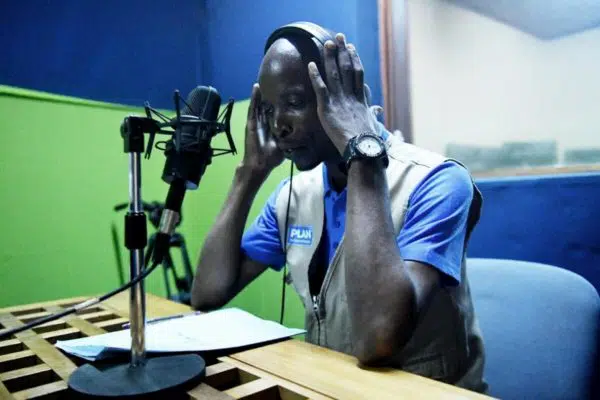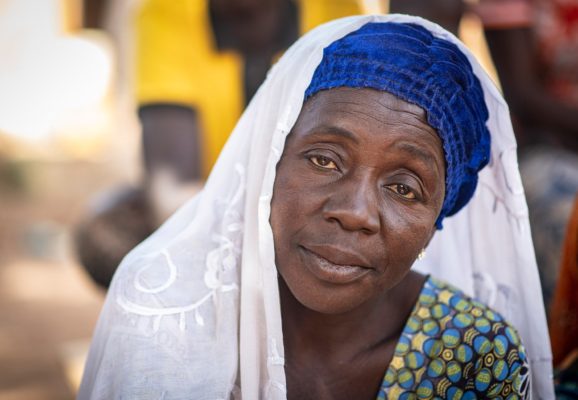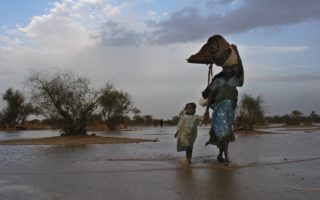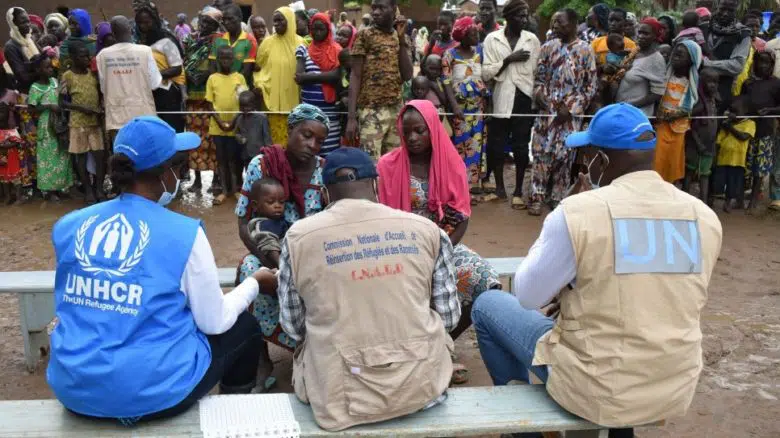
Newly arrived refugees from Cameroon are registered by UNHCR staff and humanitarian workers in a village in Chad.
© UNHCR/Aristophane Ngargoune
Dwindling water supplies are at the root of fighting between herders and fishermen that have driven thousands to flee both within Cameroon and into Chad.
By Aristophane Ngargoune in Oundouma, Chad
Under normal circumstances, small boats criss-cross the Logone River, which marks the border between Cameroon and Chad, in both directions. But over the past three weeks, 11,000 Cameroonians, 98 per cent of them women and children, have taken a one-way trip to Chad.
Cameroon’s Far North region has just experienced the deadliest intercommunal violence in its history between Choa Arab herders and Musgum fishermen and farmers. Since 10 August, 19 villages have been torched and 40 villages have been abandoned by their fearful residents. At least 45 people have been killed and 74 others injured.
Another 15 people have gone missing and are feared to have died while trying to cross the Logone river to Chad.
“I saw dead people, right in front of my eyes.”
Jean-Pierre Semana, a 52-year-old Choa Arab Cameroonian, crossed safely with his wife and six children to Oundouma, a village on the Chadian side of the river. “It was the war that brought me to Chad,” he said. “I was forced to flee. During my flight, I saw dead people, right in front of my eyes.”
The population of Oundouma has tripled in a fortnight with the arrival of 3,000 refugees. The rest of the refugees are scattered in seven villages along the Logone river.
The UN Refugee Agency, UNHCR, and its partners have distributed basic necessities, set up community kitchens to serve hot meals and erected four communal shelters, but the need for more food, water and shelter remains urgent with many refugees still sleeping under trees amidst frequent downpours.
“We are in the middle of the rainy season and malaria is affecting 76 per cent of the population, refugees and host communities alike,” said Iris Blom, UNHCR’s Deputy Representative in Chad, who visited Oundouma recently.
She added that UNHCR has set up mobile clinics and distributed medication and mosquito nets, but the heavy rains have made the roads leading to the isolated villages where refugees are sheltering almost impassable.
Despite the difficulties caused by the rains, it is their absence that is the root cause of the clashes that drove the exodus from Cameroon.
Climate change is a reality in this region of the Sahel where temperatures are rising 1.5 times faster than the global average and the UN estimates that 80 per cent of farmland is degraded. Over the past 60 years, the surface of Lake Chad, of which the Logone River is one of the main tributaries, has decreased by as much as 95 per cent.
Faced with this situation, the Musgum fishermen and farmers have dug vast trenches to retain the remaining river waters so they can fish and cultivate crops. But the muddy trenches create traps for cattle belonging to the Choa Arab herders. On several occasions, their cattle have become stuck in them and even broken their legs trying to get out.
It was one such incident that triggered the clashes that broke out on 10 August. Traditional weapons including bows and machetes were taken up and the dispute quickly escalated.
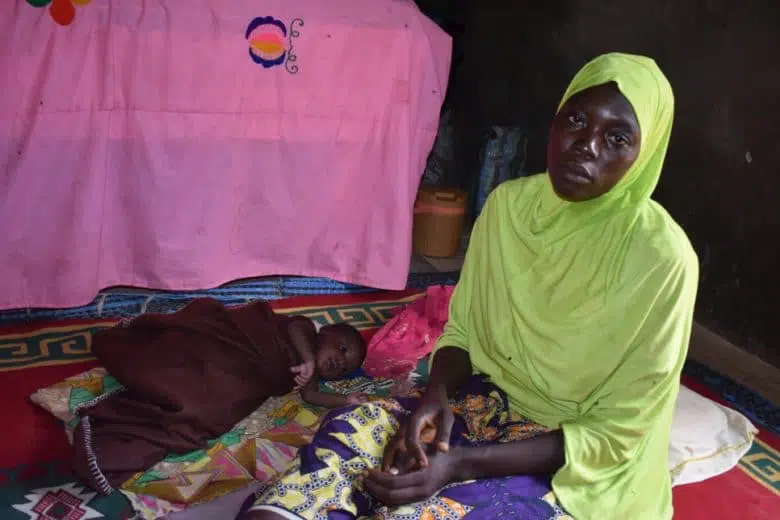
Amina was heavily pregnant when she fled the violence in Cameroon. She gave birth just two days after arriving in Chad with the help of a local midwife. © UNHCR/Aristophane Ngargoune
Amina Moussa, a 20-year-old Musgum woman, was heavily pregnant when the violence forced her to flee. She felt her first contractions while she was still travelling.
“I had to rest every 100 metres,” she recalled from the home of a local family in Oundouma where she has found refuge. “My delivery was facilitated by a village midwife two days after I arrived here.”
Amina left her husband behind and has received no news of him since arriving in Chad.
Cameroon has deployed security forces and undertaken disarmament operations and mediation to put an end to the clashes. Although relative calm has been restored, many of the refugees and 12,500 people displaced within Cameroon will not return immediately, especially those whose homes were burned down.
Farmers have been unable to tend to their crops for several weeks in the middle of the rainy season, a crucial time when crops require a lot of care. Much of the harvest is now lost.
UNHCR and its partners are supporting the Cameroonian and Chadian authorities to respond to the emergency but finding longer-term solutions to the impacts of climate change is a more complex challenge.
Subscribe to UNHCR’s mailing list
A large-scale infrastructure project named Transaqua to divert water from the Congo River basin to Lake Chad through a 2,400 kilometre-long canal has been under consideration for decades, but the first dig is not yet in sight. If and when it goes ahead, it would replenish only the Chari River, the Lake’s main tributary, but would have limited impact on water levels in the Logone River.
In the meantime, resources to deal with the humanitarian impacts of the climate emergency are limited. Chad already hosts 510,000 refugees and Cameroon 450,000 and as of 1 August, UNHCR’s operations in both countries were severely underfunded with less than half of the financial requirements for 2021 covered. Additional funding is urgently needed to respond to the needs of the forcibly displaced in both countries.
Additional reporting by Moise Amedje Peledai and Helen Ngoh Ada in Cameroon
Originally published by UNHCR on 09 September 2021.
